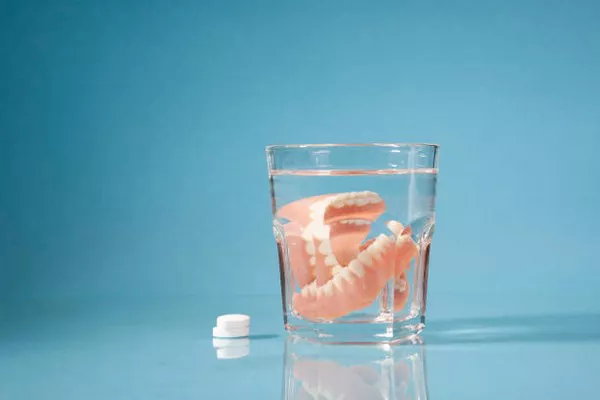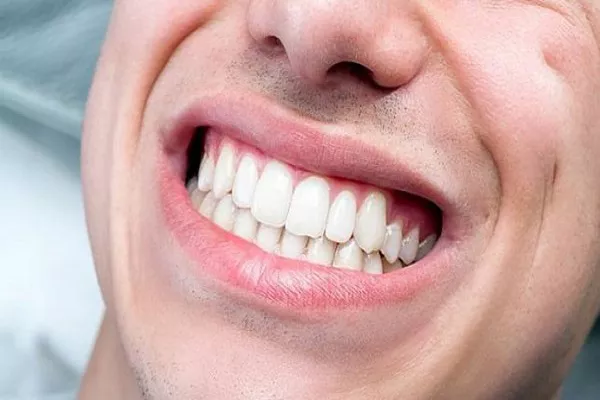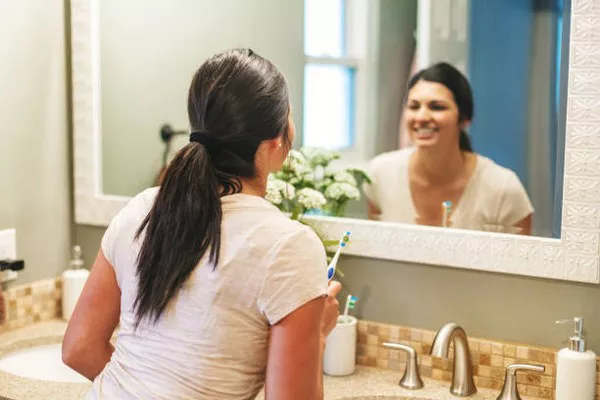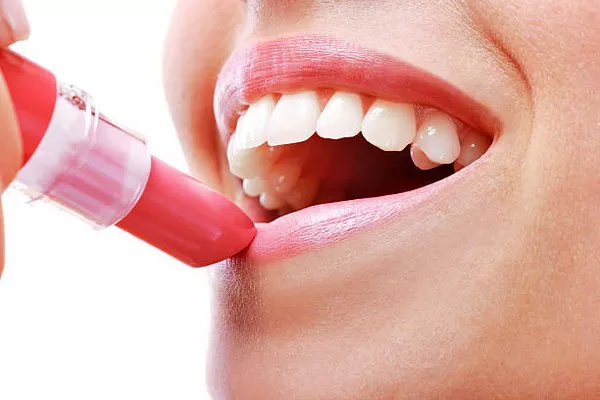Braces serve as a beacon of hope for those seeking to achieve a straighter, more confident smile. However, it’s not uncommon for wearers to notice their braces taking on a yellowish hue over time. Understanding the reasons behind this phenomenon is crucial for maintaining both the aesthetic appeal and oral health benefits of braces.
Explanation of Common Causes
1. Poor Oral Hygiene Leading to Plaque Buildup
One of the primary culprits behind yellowing braces is poor oral hygiene. When proper brushing and flossing techniques are neglected, plaque begins to accumulate around the brackets and wires of the braces. Over time, this plaque can harden into tartar, resulting in a yellowish appearance that detracts from the braces’ intended aesthetic.
2. Staining from Food and Drinks, Especially Those with Strong Pigments
The foods and beverages we consume can leave lasting impressions on our braces. Items like coffee, tea, red wine, berries, and tomato-based sauces contain strong pigments that have a knack for adhering to the surfaces of braces. As these pigments accumulate, they can gradually impart a yellowish tint to the braces, compromising their appearance.
3. The Natural Color Change of Certain Types of Braces Materials Over Time
While modern orthodontic materials are designed to be durable and resilient, they are not entirely immune to discoloration. Certain types of braces, particularly those made from ceramic or clear materials, may undergo subtle color changes over time due to environmental factors, such as exposure to foods, beverages, and oral hygiene products.
4. The Impact of Smoking or Chewing Tobacco on Brace Discoloration
Tobacco use, whether through smoking or chewing, poses significant risks to oral health. In addition to causing stains on teeth, tobacco products can also contribute to the discoloration of braces. The tar and nicotine found in tobacco can adhere to the surfaces of braces, leaving behind unsightly yellowish stains that are challenging to remove through regular brushing alone.
Preventive Measures
Preventing yellowing braces begins with adopting proactive oral hygiene practices and making mindful dietary choices. By incorporating the following preventive measures into your daily routine, you can minimize the risk of brace discoloration and maintain a bright, healthy smile throughout your orthodontic journey.
Proper Brushing Techniques, Especially Around Brackets and Wires
Brushing your teeth with braces requires extra diligence to ensure that all surfaces, including those obscured by brackets and wires, receive thorough cleaning. Use a soft-bristled toothbrush and fluoride toothpaste to gently scrub away plaque and food debris from around the braces. Pay special attention to hard-to-reach areas and brush at least twice a day for optimal results.
The Importance of Flossing and Using Mouthwash to Prevent Yellowing
Flossing is essential for removing plaque and food particles from between teeth and beneath the gumline, areas that are notoriously difficult to reach with a toothbrush alone. Consider investing in specialized floss threaders or interdental brushes designed for use with braces to make flossing more manageable. Additionally, incorporating an antimicrobial mouthwash into your oral hygiene routine can help reduce bacteria levels and freshen your breath, further safeguarding against brace discoloration.
Dietary Recommendations to Avoid Foods and Drinks That Cause Staining
While it’s tempting to indulge in your favorite foods and beverages, certain items are notorious for staining teeth and braces. Limit your consumption of highly pigmented foods like berries, curry, soy sauce, and balsamic vinegar, as well as beverages such as coffee, tea, red wine, and cola. If you do indulge in these staining culprits, consider using a straw to minimize contact with your braces and rinse your mouth with water afterward to help prevent staining.
Cleaning and Maintenance Tips
In addition to practicing good oral hygiene habits and making mindful dietary choices, regular cleaning and maintenance of your braces are essential for preserving their appearance and functionality. By following these cleaning and maintenance tips, you can effectively combat brace discoloration and ensure that your smile shines brightly throughout your orthodontic treatment.
How to Clean Braces Effectively to Prevent Yellowing
Cleaning braces requires a combination of brushing, flossing, and rinsing to remove plaque and food debris from all surfaces. Start by rinsing your mouth with water to loosen any trapped particles, then use a toothbrush and fluoride toothpaste to brush your teeth and braces gently. Angle the bristles towards the gumline and brush in small, circular motions, paying close attention to the areas around brackets and wires. Finish by flossing between each tooth and beneath the wires to remove any remaining debris.
The Role of Regular Professional Dental Cleaning in Maintaining Brace Color
While diligent at-home care is essential for keeping braces clean, regular professional dental cleanings are equally important. Your dentist or orthodontist can remove stubborn plaque and tartar buildup that may be contributing to brace discoloration, as well as provide guidance on proper oral hygiene techniques. Aim to schedule dental cleanings every six months or as recommended by your oral healthcare provider to ensure optimal oral health and brace maintenance.
Advice on Choosing Ligature Colors That Are Less Prone to Discoloration
Ligatures, also known as elastic bands, are used to secure the archwire to the brackets of braces and come in a variety of colors to suit personal preferences. While vibrant colors may be visually appealing, they are also more prone to staining and discoloration over time. Consider opting for lighter-colored ligatures, such as white or clear, to minimize the visibility of stains and maintain a cleaner appearance between orthodontic appointments.
Solutions and Treatments
Despite your best efforts to prevent brace discoloration, you may still encounter stains that stubbornly cling to your braces. Fortunately, there are several solutions and treatments available to help restore the natural color of your braces and enhance the overall appearance of your smile.
Products and Methods to Remove Existing Stains from Braces
Over-the-counter whitening products, such as whitening toothpaste, mouthwash, and dental floss, can help lift surface stains from braces and teeth. Look for products that are specifically formulated for orthodontic patients and follow the manufacturer’s instructions for safe and effective use. Additionally, consider using a dental irrigator or water flosser to flush away plaque and debris from hard-to-reach areas around braces.
When to Consult an Orthodontist for Discoloration Issues
If stubborn stains persist despite your best efforts to remove them at home, it may be time to consult your orthodontist for professional guidance. Your orthodontist can assess the extent of the discoloration and recommend appropriate treatment options, such as professional cleaning, polishing, or in-office whitening procedures. They can also offer personalized advice on how to maintain the appearance of your braces moving forward.
Post-Braces Care to Restore the Natural Color of Teeth
Once your braces are removed, you may notice differences in coloration between the areas of your teeth that were covered by brackets and wires and those that were not. This is entirely normal and can typically be addressed through post-braces care, such as professional teeth whitening or dental bonding. Consult with your dentist to explore your options for restoring a uniform, radiant smile after completing your orthodontic treatment.
Reassurance and Support
Experiencing brace discoloration can be disheartening, but it’s essential to remember that you’re not alone in facing this common issue. By normalizing the experience of brace discoloration and offering reassurance and support, we can empower orthodontic patients to take proactive steps towards maintaining their oral health and achieving the smile of their dreams.
Normalizing the Experience of Brace Discoloration as a Common Issue
Brace discoloration is a prevalent concern among orthodontic patients, regardless of age or background. Whether you’re navigating the challenges of adolescence or embracing orthodontic treatment as an adult, it’s essential to recognize that yellowing braces are a temporary inconvenience rather than a permanent setback. By acknowledging brace discoloration as a common issue, we can remove the stigma associated with it and foster a sense of community among those undergoing orthodontic treatment.
Encouragement to Maintain Oral Hygiene and Seek Professional Help When Needed
Maintaining optimal oral hygiene is key to preventing brace discoloration and ensuring the success of your orthodontic treatment. By adhering to a consistent routine of brushing, flossing, and rinsing, you can minimize the risk of plaque buildup and staining, preserving the appearance and integrity of your braces. If you encounter challenges or concerns along the way, don’t hesitate to reach out to your orthodontist for guidance and support. They are dedicated to helping you achieve the best possible outcome and can offer tailored solutions to address your specific needs.
Conclusion
Understanding why your braces turn yellow is the first step towards effectively preventing and addressing brace discoloration. By implementing proactive oral hygiene practices, making mindful dietary choices, and seeking professional guidance when needed, you can maintain a bright, healthy smile throughout your orthodontic journey. Remember, brace discoloration is a common issue that can be managed with patience, diligence, and the support of your oral healthcare team. Together, we can ensure that your smile shines brightly from start to finish.
FAQs About Braces and Yellowing
1. How do you get the yellow off braces?
Yellowing of braces can occur due to various factors, including plaque buildup, staining from food and drinks, and natural discoloration of certain materials. To remove yellow stains from braces, it’s essential to maintain good oral hygiene practices, including regular brushing, flossing, and rinsing with mouthwash. Additionally, using specialized orthodontic cleaning tools, such as interdental brushes and water flossers, can help reach areas that are difficult to clean with a regular toothbrush. If stubborn stains persist, consult your orthodontist for professional cleaning and treatment options.
2. Why are my braces brackets yellow?
The yellowing of braces brackets can be attributed to several factors, including poor oral hygiene leading to plaque buildup, staining from pigmented foods and beverages, and natural color changes of certain types of braces materials over time. Additionally, smoking or chewing tobacco can contribute to brace discoloration due to the tar and nicotine present in tobacco products. Proper cleaning and maintenance of braces, along with lifestyle modifications to avoid staining agents, can help prevent and reduce the yellowing of braces brackets.
3. Do clear braces make teeth look yellow?
Clear braces, also known as ceramic braces, are designed to blend in with the natural color of teeth, providing a more discreet orthodontic treatment option compared to traditional metal braces. However, clear braces themselves do not cause teeth to appear yellow. Instead, any discoloration may be attributed to factors such as poor oral hygiene, staining from food and drinks, or natural yellowing of teeth due to aging or genetic factors. Maintaining good oral hygiene habits and avoiding staining agents can help preserve the natural color of teeth while wearing clear braces.
4. Why are my teeth yellow even though I brush?
Despite regular brushing, teeth may still appear yellow due to various factors, including diet, lifestyle habits, and underlying dental conditions. Consuming foods and beverages with strong pigments, such as coffee, tea, red wine, and berries, can stain the enamel of teeth over time, leading to discoloration. Additionally, smoking or using tobacco products can contribute to yellowing of teeth due to the presence of tar and nicotine. Certain medical conditions, medications, and genetic predispositions may also affect the color of teeth. If you’re concerned about persistent tooth discoloration, consult your dentist for an evaluation and personalized treatment recommendations.































